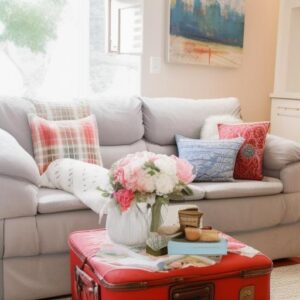Scandinavian interior design is renowned for its timeless elegance and minimalist charms. Originating in the Scandinavian countries of Sweden, Norway, Denmark, and Finland, this design style has gained worldwide popularity for its emphasis on functionality, simplicity, and natural elements.
Key Principles of Scandinavian Design
Scandinavian interior design is rooted in the principles of functionality and simplicity. In Scandinavian homes, every item serves a purpose and is carefully chosen for its usefulness. This design philosophy prioritizes clean lines, uncluttered spaces, and practicality.
Additionally, Scandinavian design embraces the beauty of natural materials and elements. It often showcases the use of wood, stone, and natural fibers like wool or linen. These natural elements help to create a sense of warmth, serenity, and connection to nature.
Integration of Clean Lines, Light Colors, and Cozy Textures
Clean lines are a hallmark of Scandinavian interior design. Furniture and decor items often feature simple, geometric shapes and sleek silhouettes. This creates a visually clean and uncluttered aesthetic.
Light colors play a significant role in Scandinavian interiors, as they contribute to the overall sense of brightness and spaciousness. White, beige, and soft pastel tones are commonly used on walls, furniture, and accessories. These light colors help reflect natural light and enhance the sense of airiness in a space.
Cozy textures are another important aspect of Scandinavian design. Incorporating warm and tactile elements like plush rugs, faux fur throws, and knitted blankets add depth and comfort to the minimalist spaces. These textures create a feeling of coziness and promote a sense of hygge, a Danish concept that translates to a feeling of warmth and contentment.
Practical Tips for Incorporating Scandinavian Design Elements
1. Focus on functionality: Choose furniture and decor items that serve a purpose and have practical uses. Avoid excess ornamentation and clutter.
2. Opt for light and neutral colors: Use light tones for walls, floors, and furniture to create a sense of spaciousness. Additionally, consider incorporating natural materials like wood or rattan for a touch of warmth and texture.
3. Embrace natural light: Maximize the use of natural light by keeping windows unobstructed and using sheer curtains or blinds. If privacy is a concern, consider frosted or textured glass for a softer aesthetic.
4. Utilize clean lines: Choose furniture and accessories with simple and streamlined silhouettes. Avoid ornate details and opt for pieces with a minimalistic design.
5. Include cozy textures: Introduce cozy and tactile textures through the use of soft rugs, cushions, and throws. Natural fibers like wool and linen add warmth and depth to a space.
Enduring Popularity and Versatility
One of the reasons Scandinavian design remains popular is its ability to create a serene and cozy atmosphere. The clean lines and light colors contribute to a sense of order and calmness, while the use of natural materials and cozy textures add warmth and comfort.
Scandinavian design is also versatile and adaptable to various interior styles. It can be combined with other design styles, such as mid-century modern or industrial, to create unique and personalized living spaces. Its emphasis on simplicity and functionality makes it suitable for different rooms, from living areas to bedrooms, kitchens, and home offices.
In conclusion, Scandinavian interior design embodies timeless elegance and minimalist charms. Its key principles of functionality, simplicity, and natural elements create a harmonious living space. Clean lines, light colors, and cozy textures contribute to the overall aesthetic, while renowned designers and iconic pieces exemplify the core elements of Scandinavian design.
By incorporating practical tips and tricks, homeowners can easily introduce Scandinavian elements into their own spaces, resulting in a serene and inviting atmosphere.
10 Practical Tips for Incorporating Scandinavian Interior Design Principles into Your Home



